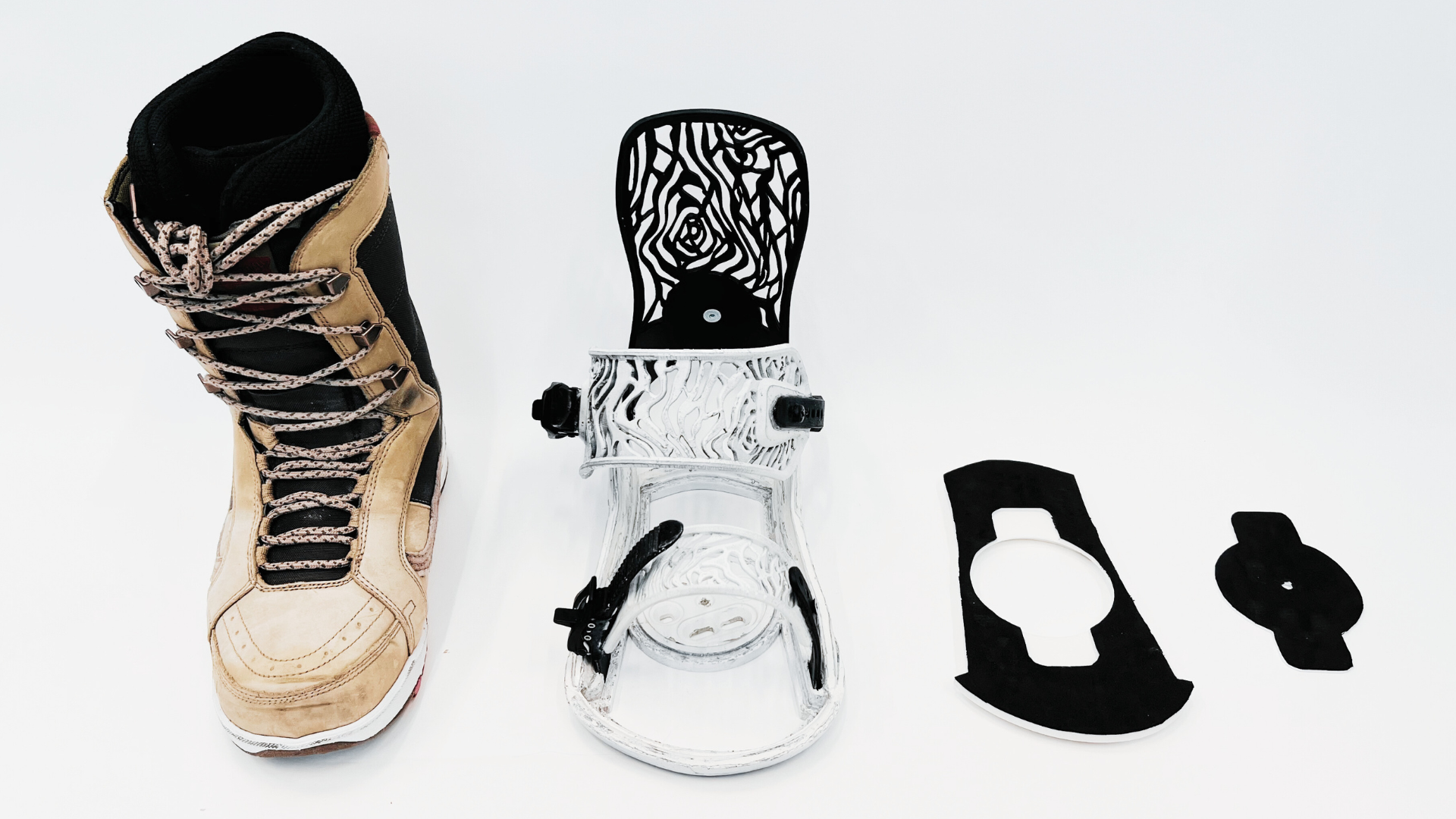
THEY DEVELOP - YOU PROGRESS
BOARDERLINE
BORDERLINE is a versatile and personally focused response to consumers’ diverse and developing riding styles, to enhance user experiences and increase performance capabilities.
Focus on longevity of snowboard bindings is a similarly important factor. The infill density, pattern and composition are all adaptable so riders can decide between their bindings' flexibility and the specific areas in which the highback and footbed will perform to the highest standard. A modular and interchangeable component system makes the most of the unique material capabilities of plastic. Produced within a closed loop biological system, the products can constantly evolve, enhancing the user's experience.”

















































Can you explain the inspiration behind your design concept and how it aligns with the themes of sustainable materials and circularity?
My design response aimed to approach plastic as a material which would benefit both the environment and consumer in the most versatile yet appropriate ways possible. Plastic is a material which is commonly perceived to be negative but when applied to the scenario of snowboard bindings, it is the materials uniquely adjustable compositions, structures, infill patterns and densities which not only allow for the product to fulfil the requirements of specific users and their personal riding styles.
My product and system celebrates plastic’s unique material capabilities to provide variable riding experiences with a modular and interchangeable component based system. Bindings lasting an average of 50-100 days, the lack of aftermarket upgradability, general wear and tear and compatibility with multiple boards and boots as well as the level of versatility that must be required for riding styles and changing preference can all be resolved by UPM’s material. This overcomes the large array of issues that exist within the usage of non bio based plastics, and bindings as an existing product, which often have extremely limited lifetimes before obsolescence.
Were there any lessons or insights you gained from this collaboration that you think could guide your future work, or other designers?
Designing with reference to biomimicry in this collaborative project was something I had not previously investigated. Using natural patterns which relate to the consumer profile and the associated functionality and performance was one of the aspects which allowed me to map and design the free ride, freestyle and all my mountain binding variants. Staying close to nature and structure of organic materials will be something I remain to apply in my practice, particularly in the initial ideation and testing stages of my process. It is with this use of a bioplastic that I found a deeply intertwined design solution between the plastic and the natural environment from which it was sourced. I believe that this embrace of plastics qualities was one of the strongest decisions within the project.



